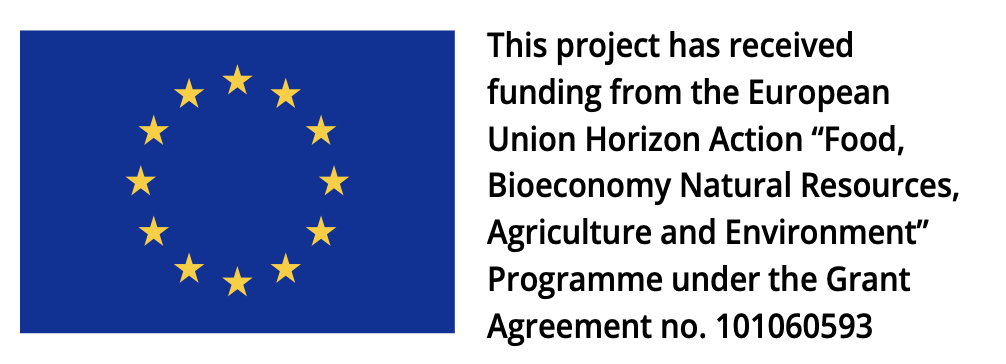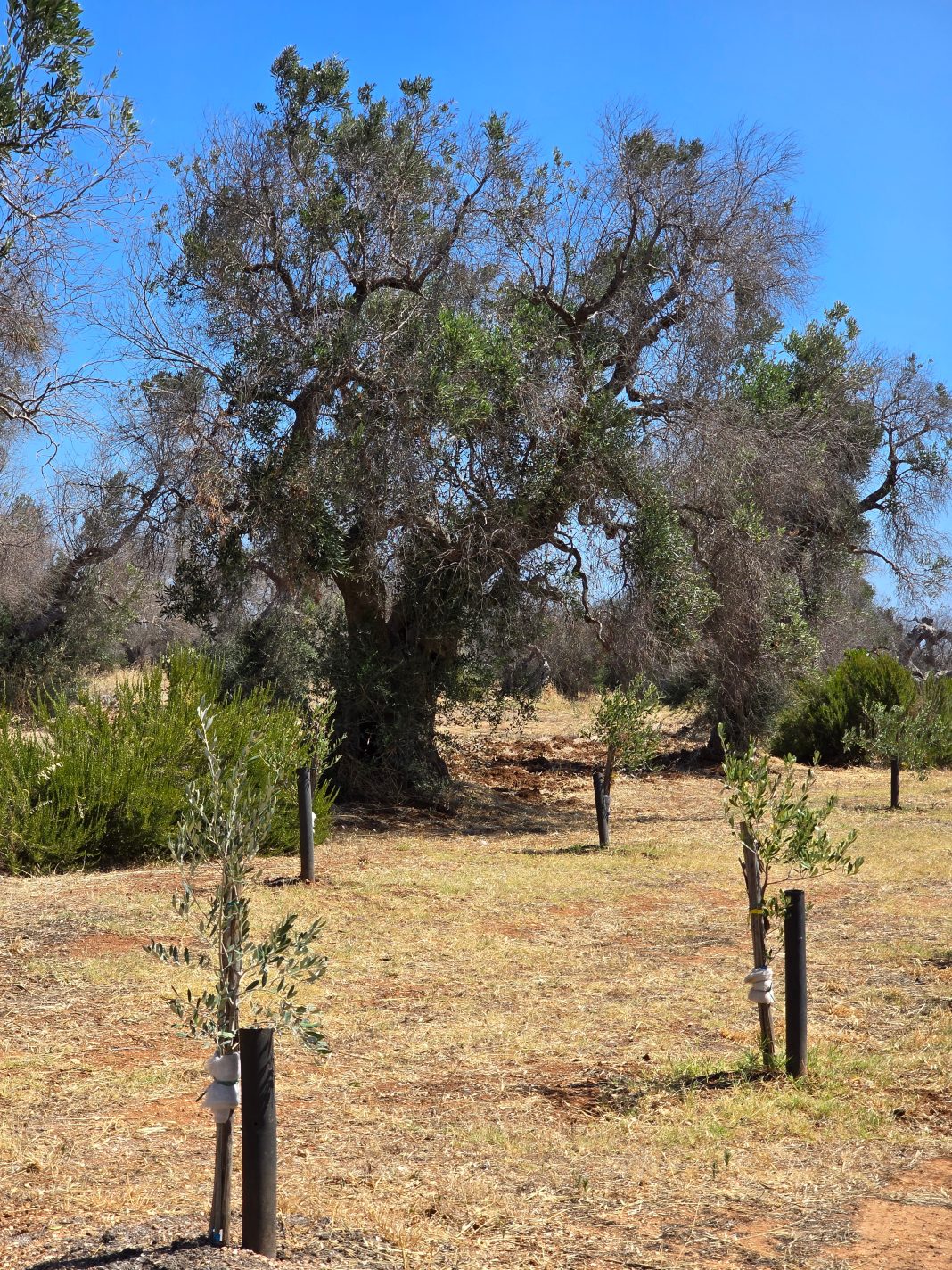Across the Mediterranean, olive groves have shaped landscapes, cultures, and economies for centuries. But in the last decade, this heritage has come under threat from a silent plant killer: Xylella fastidiosa
Known as one of the world’s most dangerous plant pathogens, Xylella fastidiosa has been linked to massive die-offs of olive trees, losses in vineyards, and risks to almonds, citrus, coffee, and dozens of other crops, and also plants from the natural environment.
In 2013, Xylella was detected for the first time in Europe, in the Italian region of Puglia. The discovery triggered shockwaves across the continent: a pathogen that had once seemed confined to the Americas was now established in Europe’s agricultural heartland. Since then, Xylella has also been detected in France, Spain, and Portugal.
The European Union has mobilized quickly, funding research to understand, detect, and limit the disease.
BeXyl, short for “Beyond Xylella,” is the latest chapter in this effort. More than just another research project, BeXyl aims to transform Europe’s response to this harmful pathogen – shifting from emergency reaction to building lasting resilience.
What is Xylella fastidiosa and why should we care?
Xylella fastidiosa is a bacterium that colonizes the xylem – the tissue responsible for transporting water inside plants. Once established, it clogs the plant’s vessels, causing symptoms such as leaf scorch, stunted growth, branch dieback, and eventually plant death.
The bacterium is not picky about its hosts: it has been found in more than 700 plant species. In economic terms, this translates into enormous risk. Olive trees are the most famous victims in Europe, but grapevines, citrus, almonds, cherries, and even ornamental trees and several plants from the landscape are also susceptible.
The pathogen spreads naturally through insect vectors, primarily spittlebugs, which feed on xylem sap. Human activity – through trade of infected plants – adds another layer of risk. And with climate change extending the habitats of both vectors and hosts, the threat of Xylella is expected to grow.
The BeXyl project in a snapshot
BeXyl is funded by the European Union under Horizon Europe. Its name, “Beyond Xylella,” captures the project’s ambition: to move past emergency containment toward long-term, sustainable solutions for fighting against this pathogen.
The project builds on earlier EU initiatives, including POnTE, and XF-ACTORS, which provided a first wave of knowledge about Xylella, and takes this foundation further by bringing together over 30 partners from across Europe and beyond (a total of 14 countries). This diversity of partners (scientists, farmers, nurseries, policymakers, and non-governmental organizations) ensures that the solutions developed are not only scientifically sound but also practical, adoptable, and aligned with real needs in the field.
Why BeXyl is different
What sets BeXyl apart is its multidisciplinary and multi-stakeholder approach. It is not only about studying bacteria or vectors in the lab, but about linking biology, agriculture, economics, environment, ecology, and social sciences. Farmers and nurseries, for instance, are not passive recipients of information but active co-creators of knowledge. Policymakers are involved from the beginning, ensuring that regulations are informed by the latest science developed within BeXyl.
Key goals and expected outcomes
- Improved surveillance and detection:
- Early detection is critical. BeXyl is advancing on methods such as remote sensing to spot infected trees, machine-learning models to predict outbreaks, and even trained detection dogs. Traditional and state-of-the-art molecular field monitoring is being optimized to make it faster and
more reliable.
- Early detection is critical. BeXyl is advancing on methods such as remote sensing to spot infected trees, machine-learning models to predict outbreaks, and even trained detection dogs. Traditional and state-of-the-art molecular field monitoring is being optimized to make it faster and
- Prevention and plant health solutions:
- To reduce risks in plant trade, BeXyl explores safer plant propagation and movement, including thermal treatments that eliminate pathogenic bacteria from nursery stocks. Breeding programs aim to identify and promote olive and almond varieties with natural resistance or tolerance to the bacterium.
- Biological innovations:
- The project is investigating natural allies against Xylella: bacteriophages (viruses that attack bacteria), beneficial microbes that can outcompete the pathogen and kill the insect vectors, and antimicrobial compounds derived from nature or synthesized in the lab. Scientists are even exploring synthetic microbiomes – custom microbial consortia that can be introduced into trees to enhance their resilience.
- Integrated pest management (IPM):
- Since spittlebugs and other vectors are the main route of spread, controlling them is essential. BeXyl develops IPM strategies adapted to both conventional and organic farming systems, combining ecological approaches with practical tools for farmers.
- Global sentinel network:
- To understand how Xylella behaves under different climates, BeXyl is establishing sentinel plots and collaborating with botanical gardens across Europe and beyond. These sites act as outdoor laboratories, tracking how the bacterium and its vectors interact under real-world conditions.
- Stakeholder-driven solutions:
- Farmers, nurseries, and regional authorities are at the heart of BeXyl. Through workshops, training sessions, and demonstration sites, the project ensures that solutions are not just theoretical but directly usable.
Beyond science: Building a community
One of BeXyl’s central achievements is community building. Plant health is not just a scientific issue – it is also social, economic, and cultural. Olive, grapevines, and almond trees, for example, are symbols of Mediterranean identity. Losing them means losing heritage, landscape, as well as income.
By involving local stakeholders, BeXyl strengthens trust between science and society. Farmers feel ownership of the solutions, policymakers understand the trade-offs, and scientists benefit from practical insights from the field. This co-creation model makes adoption of new practices much more likely.
Knowledge transfer is another pillar. Training programs help farmers and plant health inspectors recognize symptoms, apply control strategies, and participate in monitoring. Nurseries learn safer practices for plant trade. Policymakers receive science-based guidelines for risk assessment and regulation.
Looking ahead: Why BeXyl matters
BeXyl represents a shift in Europe’s strategy against Xylella fastidiosa. Instead of reacting only in times of crisis, the project builds on long-term resilience. BeXyl solutions aim to safeguard many crops and natural plants vital to European agriculture and landscapes.
The lessons learned extend beyond Xylella. Plant health threats are increasing globally due to climate change and globalization. The BeXyl model – integrating science, policy, and practice – offers a blueprint for how science and societies can respond to future plant epidemics.
Finally, BeXyl is not just about a bacterium. It is about ensuring the sustainability of agriculture, protecting cultural heritage, and securing livelihoods. In a world where invisible pathogens can reshape entire landscapes, BeXyl shows how collaboration, innovation, and foresight can turn crisis into opportunity.



